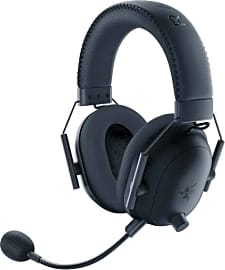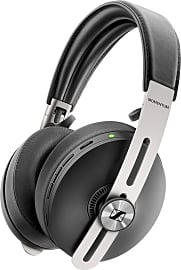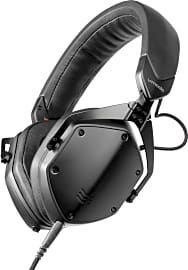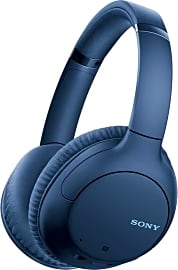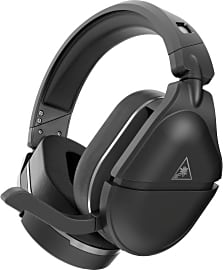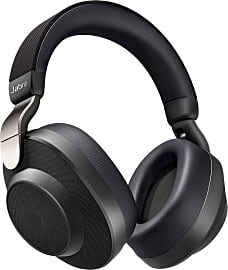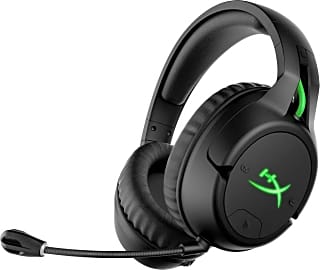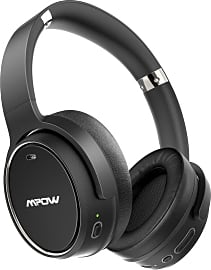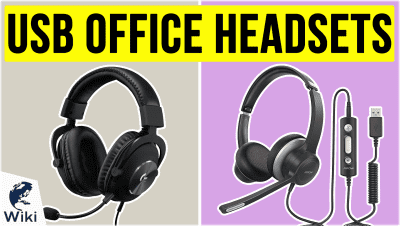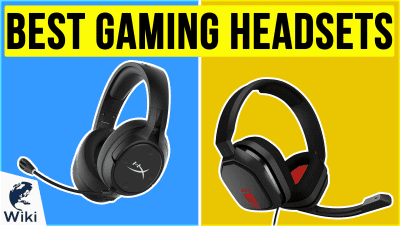The 10 Best Headphones With Mics

This wiki has been updated 39 times since it was first published in April of 2016. In addition to sounding great, many headphones are available with versatile, noise-canceling mics built in. Whether you're racking up kills in multiplayer mode, teleconferencing with headquarters, or making everyday calls, the right microphone can really make a difference. We've rated the best headsets to fill every need, based on comfort, connectivity, and audio quality. When users buy our independently chosen editorial recommendations, we may earn commissions to help fund the Wiki.
Editor's Notes
November 19, 2020:
In addition to a few notable upgrades, we replaced some of the models that were getting a little long in the tooth, like the Sennheiser Culture, with much more recent offerings, including the Sennheiser Momentum M3AEBTXL, a model with gyroscopic technology designed to sense when the user puts them on or takes them off, and to start or stop their music automatically.
The big divides are still the same here, though, mainly between models designed for music and models designed for gaming. Sure, there is some inevitable crossover, but it's important to note that models designed for gaming like the HyperX Cloud Flight rely on boom mics instead of built-in microphones. This is kind of a double-edged sword, as their larger capsules and increased proximity to the user's mouth allows them to create the best audio pickup, but they often lack any audio pickup capabilities without this installed. So, if you want to take a quick call outside the office, you might look a little silly.
There's also something to be said for wired headphones, and I've always been a proponent of owning both. A set like the V-Moda M-200 Professional doesn't need to waste any internal space or R&D outfitting it with a Bluetooth antenna, and you don't stand to lose any quality from interference in the signal. That makes them a great choice for at-home use when hooked up to a nice stereo or a computer, and you can use a wireless option — even something a little inexpensive like the MPow H19 — when you're on the go.
November 12, 2019:
While some testing numbers indicate that Sony's top-of-the-line noise-canceling headphones have a quality microphone, the feedback from users was so wildly inconsistent that we couldn't justify keeping them on this list, especially not with similarly priced options such as the Jabra Elite 85h and slightly more expensive (and noticeably superior) ones like the Bose 700. Also, HyperX's Cloud II got the boot in favor of a newer and more refined model, the HyperX Cloud Flight. The MPow were in a bit of the same situation; this budget-friendly company puts out a veritable ton of different headset versions every year and surprisingly, they don't always go up in quality with every new release. So, after careful research, we've settled on the MPow H10, which measure up to some far more expensive cans, and many users agree that they sound great on phone calls. We've also included the recently upgraded Jabra Move Style Edition as replacements for the older pair. If you're on a moderate budget, you'd be hard-pressed to do better than the Sennheiser HD 4.50, which offer exceptional sound and call quality at a great price, and if you have considerably more to spend, the Jabra Elite 85h consistently receives great marks for how good users sound while talking on it.
If you really want to get the best microphone quality, though, you might want to consider sacrificing wireless connectivity. It's nowhere near as convenient for everyday use, but with options like the Audio-Technica BPHS1 and V-Moda Crossfade LP2, you can be absolutely certain that friends, family, teammates, and fans can hear every word clearly.
Meanwhile, if you're looking for something for business use, the low-cost Voyager Focus are an excellent wired solution, and the Sennheiser Culture are some of the best stereo cans you can use for softphones. On the other hand, we can also recommend some fantastic USB-enabled headsets for office use, including a wide selection of some by Plantronics and Sennheiser as well as some that are specifically geared towards use in call centers.
Special Honors
Audeze Mobius Out of all the models known specifically for the quality of their sound pickup, this is one of the few pairs that you could reasonably call audiophile-quality. They're an interesting piece of tech, in that they utilize planar magnetic technology rather than dynamic drivers, in addition to employing high-end 3D spatial audio placement that — in theory — is ideal for simulated 7.1-channel surround sound and immersive video gaming. While there are mixed opinions on exactly how well they do these things, it's hard to argue against them as a high-fidelity pair of cans. Though they are a bit expensive. audeze.com
Where’s That Noise Coming From?
In a vacuum, no one can hear anything because there is no medium through which sound can travel.
In order to better understand how a set of headphones functions, we have to dig a little deeper and discuss the nature of sound itself. Sound is vibration, an on again, off again pulsation that can physically travel through a medium such as air or water. This is why it’s said that no one can hear you scream in space. In a vacuum, no one can hear anything because there is no medium through which sound can travel.
What we call sound waves are actually series of vibrations of specific frequencies. An individual tone or frequency is determined by the length of space between the peaks in its projection. This is where the term wavelength comes from, and it corresponds explicitly to this distance. The volume is often expressed in the height of those peaks.
So what does this have to do with headphones? Well, in order for a pair of headphones, or any speaker for that matter, to create sound, it has to be capable of reproducing a massive breadth of tones at varying frequencies, many of them simultaneously. The quality of the sound produced by a given pair of headphones has a great deal to do with their ability to express these different frequencies individually, so that they don’t begin to sound muddy.
To make this happen, your audio player, phone connection, or gaming device translates a digital sound file into analog electrical impulses using something called a digital-to-analog converter. These impulses travel the length of wire to (or through the air as radio signals in the presence of a Bluetooth connection), and interact with a length of copper wire wrapped around a magnet in the headphones. The vibrations of this magnet result in corresponding vibrations in the cones of the headphones, and those vibrations, when they meet with the air between your headphones and your ear canal, become the sound you hear.
As you can deduce from that admittedly rudimentary description, the quality of the copper coiling, magnets, and speaker cones or diaphragms used in a given pair of headphones will make the biggest difference in the quality of sound from one pair to the next.
How To Choose The Best Pair Of Headphones With A Mic For You
When evaluating the wide variety of headphones with built-in mics on the market, the most important thing you need to know is how exactly you intend to use the cans. A close examination of the marketplace will show you that almost every pair of headphones currently for sale has some kind of microphone involved in its construction. Many of these are what are called in-line mics, which are microphones built into the control node that exists along the model’s cable. These are fine for taking phone calls, but they are usually pretty low in quality, especially compared with mics built into the cans themselves.
A close examination of the marketplace will show you that almost every pair of headphones currently for sale has some kind of microphone involved in its construction.
That said, if all you need a microphone for is interacting with people over the phone, there are completely wireless headphones with small built-in mics that can readily get the job done. These are ideal if you’re on a budget or if you’re not making calls where the content of your conversation could have serious business implications; they’re best suited for casual wearers who want to be able to take calls at the gym or wherever else you like to listen to music.
If you have more serious business to attend to, whether that’s building up an investment empire or toppling an opponent's empire in an addictive MMORPG, you might want a model that has a more serious microphone option. The better mics in this category typically exist at the end of boom arms that plug into the bottom of the headphones. Occasionally, these mics are not removable, which can be a pain if you want to just relax and listen to some tunes, but most readily unplug from a standard 3.5mm jack. That also means that if anything should ever go wrong with the microphone, you can easily replace it without having to buy a whole new set of headphones.
Concerning comfort, most of the options on the market are what’s called superaural, or over-the-ear headphones, which completely enclose the outer ear inside their bodies. These provide a subtle amount of natural sound isolation, which can be great if you’re in a noisy environment, but they also have a tendency to be uncomfortable over large ears, and they can get hot fast. Supra-aural headphones, on the other hand, sit on top of the ears. They’re usually a little smaller, which can be good it you’re traveling with them, but they don’t provide the same sound isolation qualities as their over-the-ear counterparts.
A Brief History Of Headphones And Their Mics
The earliest headphones were developed for use with radio communications devices, and were used primarily for military purposes in the early part of the 20th century. These devices were a little on the dangerous side, however, as many had the ability to give the user an electrical shock if he touched the wrong component at the wrong time.
In the more recent case, many of those models included in-line and eventually integrated microphones.
Since they were intended for radio communications, these early headphones did exist alongside microphones, but these mics were in no way integrated to the cans themselves. Rather, they were the tabletop variety common to mid-century CB radio designs.
As the recording industry grew alongside the reach and power of the telephone companies, both industries came to rely heavily on the most advanced headphones of the time. Consumers, on the other hand, had very little use for them. That changed largely in the 1960s and 70s, when home stereos began to infiltrate the average American’s life, and listening through hi-fidelity headphones became an enjoyable pastime.
Again, there was a bit of a gap in development and consumer demand until the Sony introduced it’s Walkman cassette player, and the small, metal-banded headphones that came with each one. This revolution would be mirrored in the release of the Apple iPod, which, like the Walkman, came with a pair of sub-par headphones, opening the markets in the 1980s and 2000s respectively to an influx of high-quality, third-party options. In the more recent case, many of those models included in-line and eventually integrated microphones.


